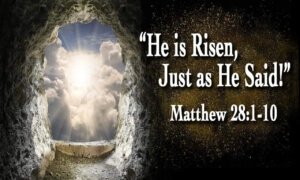By Monika Manser
Introduction
The most frequent way of praying that Saint Ignatius uses is that of imagining ourselves in a Gospel scene. We imagine ourselves as a character in the story. We take part in the story, seeing Jesus and all the other people, being aware of what’s going on and how we are feeling. The purpose of praying with the imagination is to allow Christ in the Scripture to speak to us. To bring the Gospel stories to life for us. We are not trying to recreate history. It doesn’t matter if your imagination takes the story off in a different direction to the Scripture. It doesn’t matter if the story takes place in 1st century Palestine or where we live now in the 21st century. What is important is what God wants to say to us through this passage.
Let us sit and relax so that together we can contemplate the Gospel using our imagination.
Prayer
We acknowledge we are in the presence of God so let us say together:
Direct O Lord and guide and influence all that is happening in my mind and heart during this time of prayer: all my moods and feelings, my memories and imaginings; my hopes and desires; may all be directed and influenced to your greater glory, praise and service and to my growth in your Spirit.
Amen
Let the Spirit enter our hearts and enlighten our minds so that we like the women at the tomb, can encounter Jesus and hear him saying to us, “Do not be afraid”
Reading
Matthew 28:1-10
After the sabbath, as the first day of the week was dawning, Mary Magdalene and the other Mary came to see the tomb. And behold, there was a great earthquake; for an angel of the Lord descended from heaven, approached, rolled back the stone, and sat upon it. His appearance was like lightning and his clothing was white as snow. The guards were shaken with fear of him and became like dead men. Then the angel said to the women in reply, “Do not be afraid! I know that you are seeking Jesus the crucified. He is not here, for he has been raised just as he said. Come and see the place where he lay. Then go quickly and tell his disciples, ‘He has been raised from the dead, and he is going before you to Galilee; there you will see him.’ Behold, I have told you.” Then they went away quickly from the tomb, fearful yet overjoyed, and ran to announce this to his disciple
And behold, Jesus met them on their way and greeted them. They approached, embraced his feet, and did him homage. Then Jesus said to them, “Do not be afraid. Go tell my brothers to go to Galilee, and there they will see me.”
Contemplation
All four Gospels recount the Passion, death and Resurrection of Jesus. These accounts differ slightly depending on who the narrative is meant for. However what the Resurrection stories do have in common are that the tomb was found empty and the Risen Christ appeared to certain people. Let us enter St Matthew’s narrative which is read at the Easter Vigil this year and watch the scene unfold as he appears to Mary of Magdala and the other Mary.
- Who are you within the story? Are you Mary of Magdala? The other Mary? One of the guards? The angel? Perhaps something or someone not mentioned in the written story.
-
What was the dawn like? What is the climate like? Chilly? Hot? Oppressive? What is the atmosphere like? Is it full of grief, confusion or even anger? What can you see, hear and feel around you?
-
What is the location like? What sounds, smells, and the other details about the location do you notice? Do you notice the soldiers guarding the tomb? What are they doing? Are they sleeping? Are they chatting to one another? Perhaps they are around a campfire talking in low voices.
-
Why do you go to the tomb? Could you not sleep wondering why Jesus had to die? Do you feel you need something to do so you decide to tend to Jesus’ mortal remains? How does your heart feel? Heavy with grief? Filled with sorrow? Do you feel angry or confused that Jesus allowed himself to be taken without defending himself? Do you feel he deserted you when there was so much more to learn from him? Do you feel you cannot go on without him to instruct you?
-
What happens next? How do you react to the earthquake? When you see the angel rolling back the stone of the tomb? Imagine your shock. How do the soldiers react? Imagine their shock?
-
How do you react when you hear the angel speaking to you? Are you comforted when he said “Do not be afraid?” When the angel assures you that Jesus “has been raised just as he said., how do you feel? Overjoyed? Frightened? Disbelief because you saw him die?
-
Do you go and look inside the tomb as the angel instructed? How do you feel when you see the empty tomb? Joy at realising that Jesus’ promise to rise on the third day was actually true? Does what Jesus said during the past three years begin to make sense to you? That the horrific events in Jerusalem was not his end but a beginning? Perhaps nothing that Jesus had said could have prepared you for the reality of the Resurrection.
-
As you run to give the disciples the message and also to give them the instructions that the Angel had given them, to meet Jesus in Galilee, you meet the risen Christ. Imagine how you feel? Are you overjoyed with his words of comfort and kneel down to worship him? Is there anything you want to say to him?
-
Do you too want to go to Galilee and encounter the risen Christ in your ordinary life, amidst things that are familiar to you? How do you feel about Jesus calling you brother? Do you feel he now trusts you to carry on his mission?
Speak to the Risen Christ about opportunities that you can encounter him in your every day life in your family, in your community, in your prayer time, in nature.
Sharing
Let us now share what we thought, felt etc. only if you are comfortable to do so.
End Prayer
Suscipe of St. Ignatius of Loyola
Take, Lord, and receive all my liberty,
my memory, my understanding,
and my entire will,
All I have and call my own.
You have given all to me.
To you, Lord, I return it.
Everything is yours; do with it what you will.
Give me only your love and your grace,
that is enough for me.
Scripture texts: from the Jerusalem Bible 1966 by Dartington Longman & Todd Ltd and Doubleday and Company Ltd




